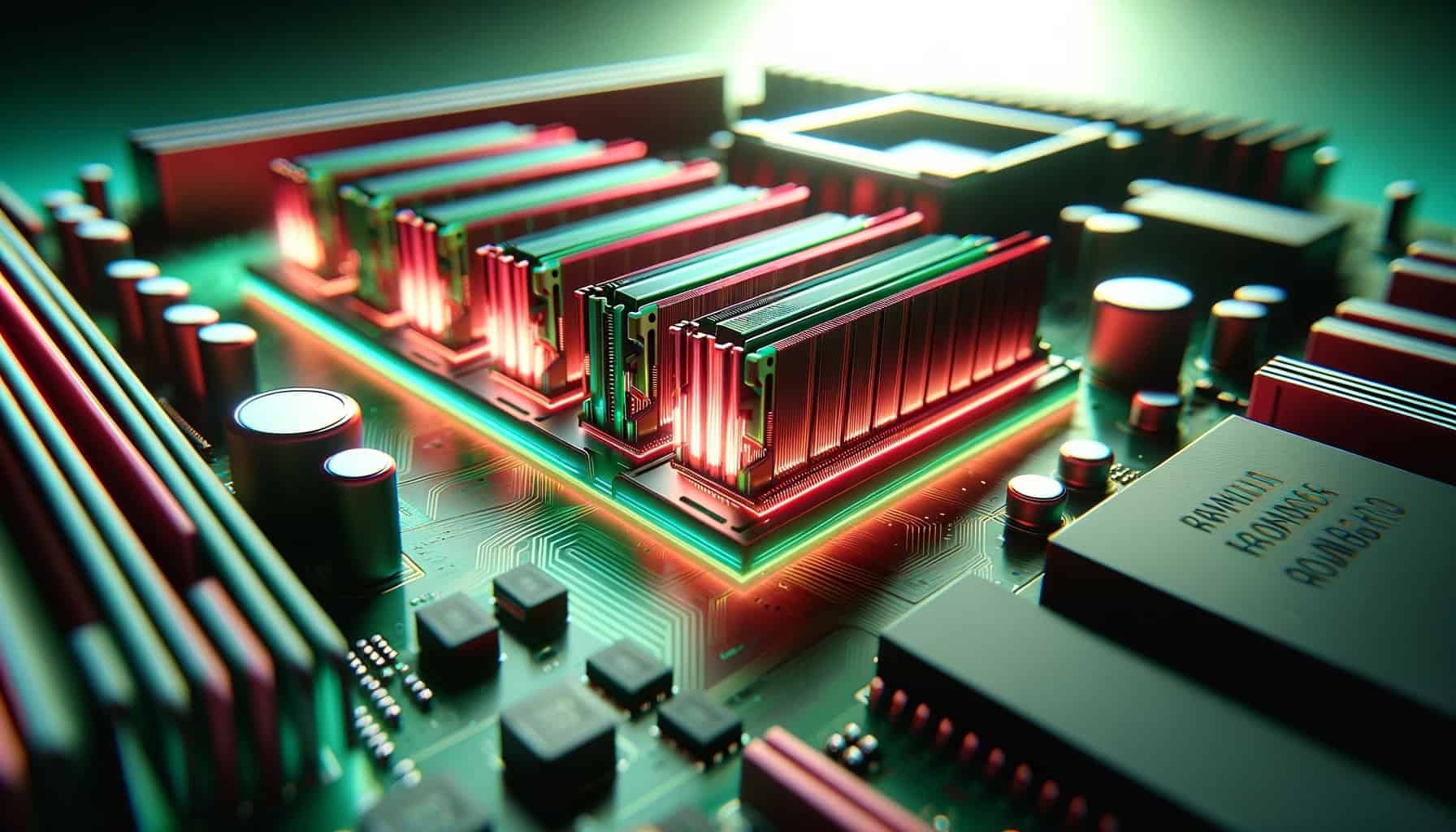Difference between RAM and ROM
by Yogi P - November 4, 2023
Difference between RAM and ROM | RAM vs. ROM
In the realm of computing, RAM (Random Access Memory) and ROM (Read-Only Memory) form the backbone of a device’s memory system, yet they serve very different purposes.
Understanding the distinction between these two types of memory is essential for anyone looking to comprehend how computers function, and for making informed decisions when assessing computing devices.
Fundamental Functions: RAM’s Volatility vs. ROM’s Permanence
RAM is the dynamic workspace of a computer, where programs and data in current use are kept so they can be quickly reached by the device’s processor. It is called “random access” because the processor can access any memory cell directly if it knows the row and column that intersect at that cell.
Key Attributes of RAM:
- Volatility: RAM is volatile, meaning that it loses its content when the device is turned off.
- Speed: It offers high-speed access and data exchange, enabling efficient processing.
- Capacity: Generally, devices have more RAM today to accommodate sophisticated software.
ROM, on the other hand, is non-volatile memory that is used primarily to store firmware (software that is closely tied to specific hardware and unlikely to need frequent updates).
Key Attributes of ROM:
- Non-Volatility: ROM retains its contents even when the device is turned off.
- Pre-Programmed: It is often programmed during the manufacturing process.
- Stability: Offers a secure and stable storage for essential system instructions.
Technical Specifications: Architecture and Access Speeds
The architecture of RAM and ROM is tailored to their respective roles in a computer system.
RAM Architecture:
- Dynamic (DRAM): Stores each bit of data in a separate capacitor within an integrated circuit.
- Static (SRAM): Uses bistable latching circuitry to store data and is faster than DRAM.
ROM Architecture:
- Masked ROM: Programmed during manufacturing and cannot be modified.
- Programmable ROM (PROM): Can be programmed once after manufacturing.
- Erasable Programmable ROM (EPROM): Can be erased and reprogrammed using strong ultraviolet light.
Practical Application: Usage in Computing Devices
The usage of RAM and ROM in computing devices further highlights their differences:
RAM in Computing:
- Short-Term Memory: Acts as the computer’s short-term memory, used by the CPU to process data.
- Resource Allocation: Determines the number of programs that can run simultaneously and how fast they operate.
ROM in Computing:
- Firmware Storage: Houses the firmware required for devices to boot up and function correctly.
- Permanent Instructions: Stores critical system instructions that are infrequently or never changed.
Overview Table: Difference between RAM and ROM
| Aspect | RAM (Random Access Memory) | ROM (Read-Only Memory) |
|---|---|---|
| Volatility | Volatile (content is lost on power-off). | Non-volatile (retains content after power-off). |
| Function | Temporary storage for active processes and data. | Permanent storage for critical boot and system functions. |
| Mutability | Can be written to and read from freely by the CPU. | Typically not writable; primarily for reading only. |
| Speed | Faster access time; essential for system performance. | Slower compared to RAM; suitable for firmware. |
| Usage | Used during active operation of a device. | Used during boot-up sequences and system recovery. |
| Types | DRAM, SRAM. | PROM, EPROM, EEPROM. |
| Capacity | Larger in size, expandable in most systems. | Smaller in size, usually fixed capacity. |
| Physical Form | Comes as sticks (DIMMs/SO-DIMMs) for PCs and laptops. | Embedded in the motherboard or device circuitry. |
| Cost | More expensive per bit than ROM. | Less expensive due to its non-volatile nature. |
| Energy Usage | Consumes more power due to its dynamic nature. | Consumes less power; mostly passive storage. |
The Evolution: Technological Advances in Memory
With technological advancements, the lines between RAM and ROM have sometimes blurred. For example, Flash memory, used in SSDs and USB drives, is non-volatile like ROM but can be rewritten and hence functions similarly to RAM.
Impact on Device Performance
The ratio of RAM to ROM in a device can significantly affect its performance and capabilities:
- More RAM: Devices with more RAM can run more applications simultaneously and handle more extensive data processing tasks.
- Sufficient ROM: Adequate ROM ensures the device can store all necessary firmware and system instructions to operate smoothly and securely.
Conclusion
While RAM and ROM may seem similar at a glance, their roles within a computer’s ecosystem are quite different. RAM is akin to a desk where tasks are performed, while ROM is more like a filing cabinet where instructions for basic functions are kept.
In a device’s memory hierarchy, RAM enables efficient and effective processing in the moment, while ROM ensures the device operates correctly every time it is powered on. Understanding this relationship not only aids in making better decisions when purchasing devices but also enriches one’s appreciation for the intricate workings of modern computing technology.
The careful design and coordination of RAM and ROM are pivotal in computing performance, making the distinction between them a fundamental topic for anyone interested in the field.








